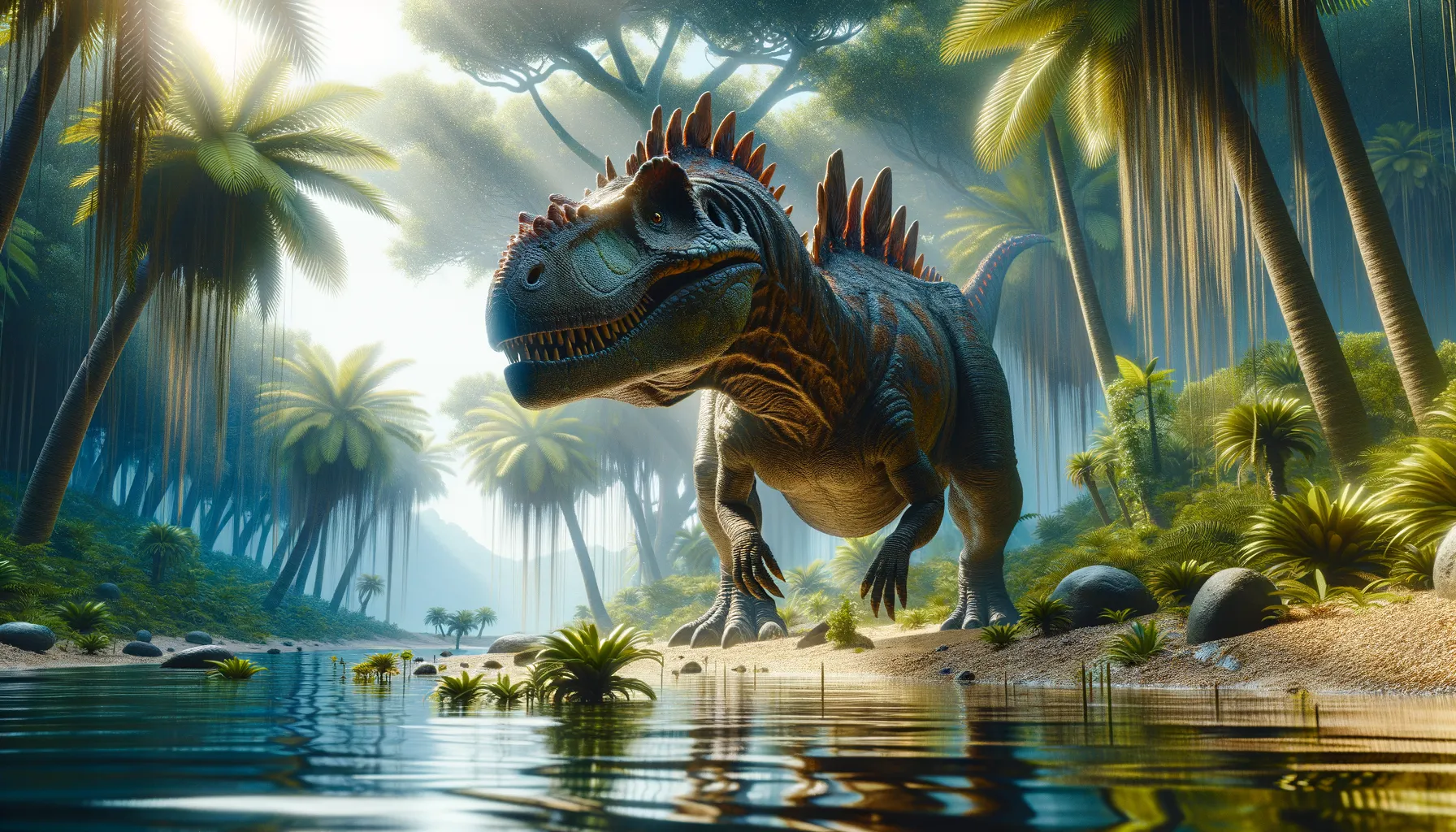
Dravidosaurus
Mystery of the Indian Cretaceous Seas.
Period
Cretaceous
Length
Possibly reached 3 meters in length.
Height
Approximately 1.5 meters tall at the hips.
Weight
Estimated to be around 250 kg.
Dravidosaurus is an intriguing dinosaur that is believed to have lived during the late Cretaceous period. Initially thought to be a stegosaur, further analysis suggests it could have been a marine reptile. Its fossils were discovered in southern India, providing important insights into the diversity of prehistoric life in that region. Debate still surrounds its exact classification, making it a fascinating subject for paleontological study.
Diet
Dravidosaurus was most likely a herbivore, feeding on the present vegetation. Its diet might have included a variety of plants that were abundant in its marine-influenced environment.
Hunting
Being a herbivore, Dravidosaurus did not hunt but likely grazed on available plant life. It may have used its adapted physical features to reach or manage certain types of seaweed or coastal plants.
Environmental challenges
Dravidosaurus lived in an environment that likely experienced significant changes, including fluctuations in sea levels. These changes might have impacted the availability of its food sources. Additionally, it would have faced predation threats from larger marine reptiles. Climate changes towards the end of the Cretaceous also posed challenges to its survival.
Speed
Presumably slow-moving.
Lifespan
Potentially several decades.
First discovery
Discovered in 1979 in India.
Fun Facts
- Dravidosaurus was a dinosaur that lived during the Late Cretaceous period, around 85 to 66 million years ago.
- It is thought to be one of the last surviving marine reptiles, although its classification has been debated over the years.
- Dravidosaurus fossils were first discovered in the southern part of India, highlighting its connection to the ancient landmass of Gondwana.
- Compared to many dinosaurs, Dravidosaurus was relatively small, with estimates suggesting it was only about 3 meters (10 feet) long.
- The name 'Dravidosaurus' comes from the Dravidian region of India where its remains were found, and 'saurus' means lizard in Greek.
- Due to limited fossil evidence, there's still much that scientists hope to learn about how Dravidosaurus lived and what it looked like.
- Dravidosaurus has sparked fascination and curiosity because it challenges our understanding of the transition between certain dinosaur groups.
Growth and Development
Dravidosaurus may have exhibited growth patterns typical of other similar reptiles, with slow development punctuated by faster growth spurts. Juveniles would have had to navigate the challenges of both terrestrial and marine threats as they matured. Its physical development might have included changes that adapted it to a semi-aquatic lifestyle.
Habitat
The habitat of Dravidosaurus was likely coastal, indicating a comfortable adaptation to water proximity. It may have lived in environments that included lagoons and shallow seas. This semi-aquatic lifestyle would have required adaptations for both swimming and terrestrial navigation.
Interaction with other species
In its environment, Dravidosaurus possibly interacted with various marine reptiles and fish. As a herbivore, it might have played a role in maintaining plant communities along coastal areas. Its presence could have also influenced the behavior of local predators, shaping ecological dynamics.
Natural lifespan
Dravidosaurus could have lived several decades, much like other similar-sized reptiles.
Reproduction
Dravidosaurus likely reproduced by laying eggs, as with many other reptiles. Its nesting behavior might have included choosing areas close to water bodies. The young would have been vulnerable to predation, relying on protective behavior or secluded nesting sites.
Social behaviour
Dravidosaurus might have exhibited some level of social behavior, such as grouping for protection against predators. However, it is also possible that it was a solitary creature, interacting mainly during the breeding season. Its social behavior remains speculative due to limited fossil evidence.
Fossil locations
Fossils of Dravidosaurus have primarily been found in southern India. These locations provide crucial insights into the Cretaceous period's marine and coastal ecosystems in this region. The fossils are lost, contributing to the ongoing debate about the exact classification of Dravidosaurus.
